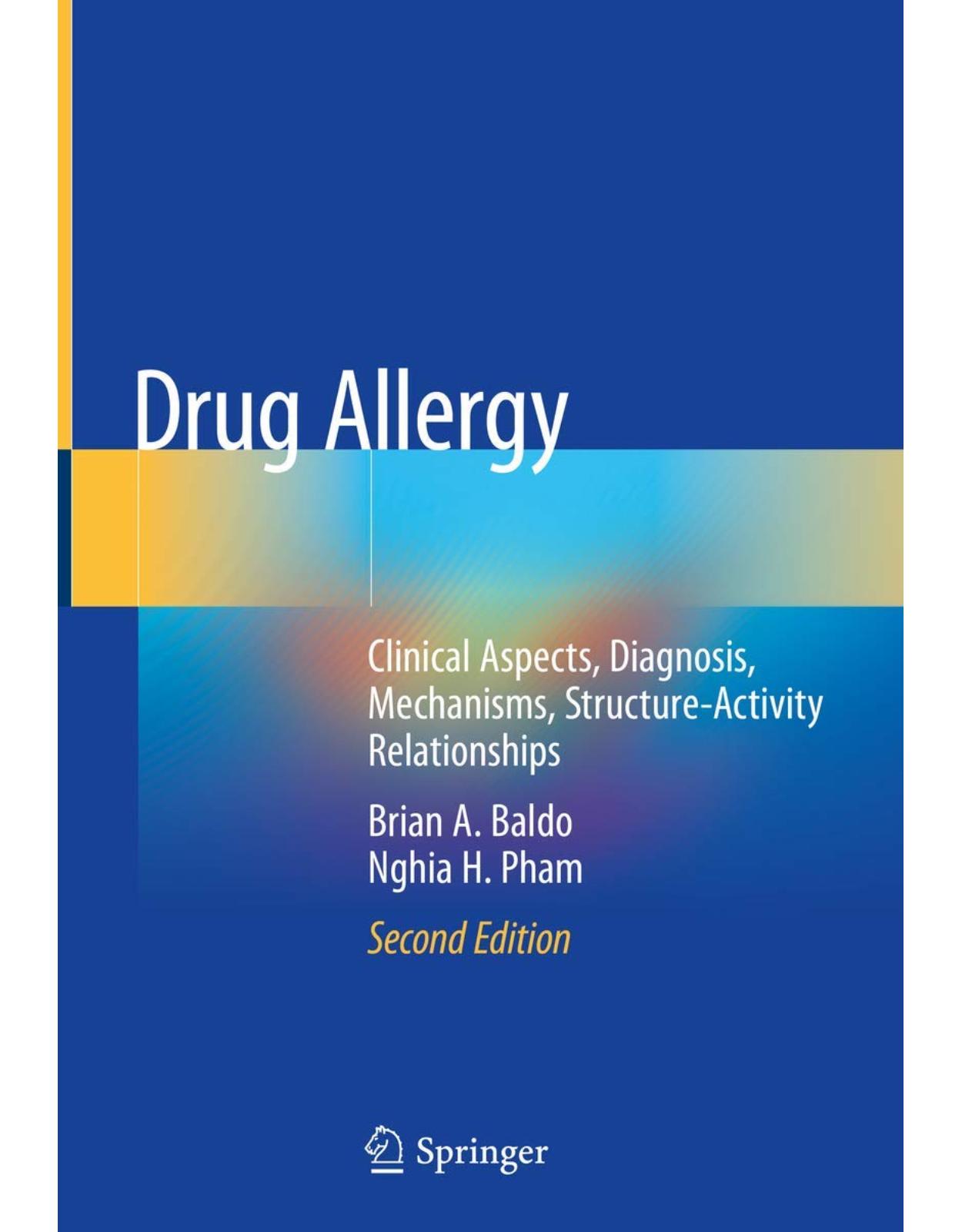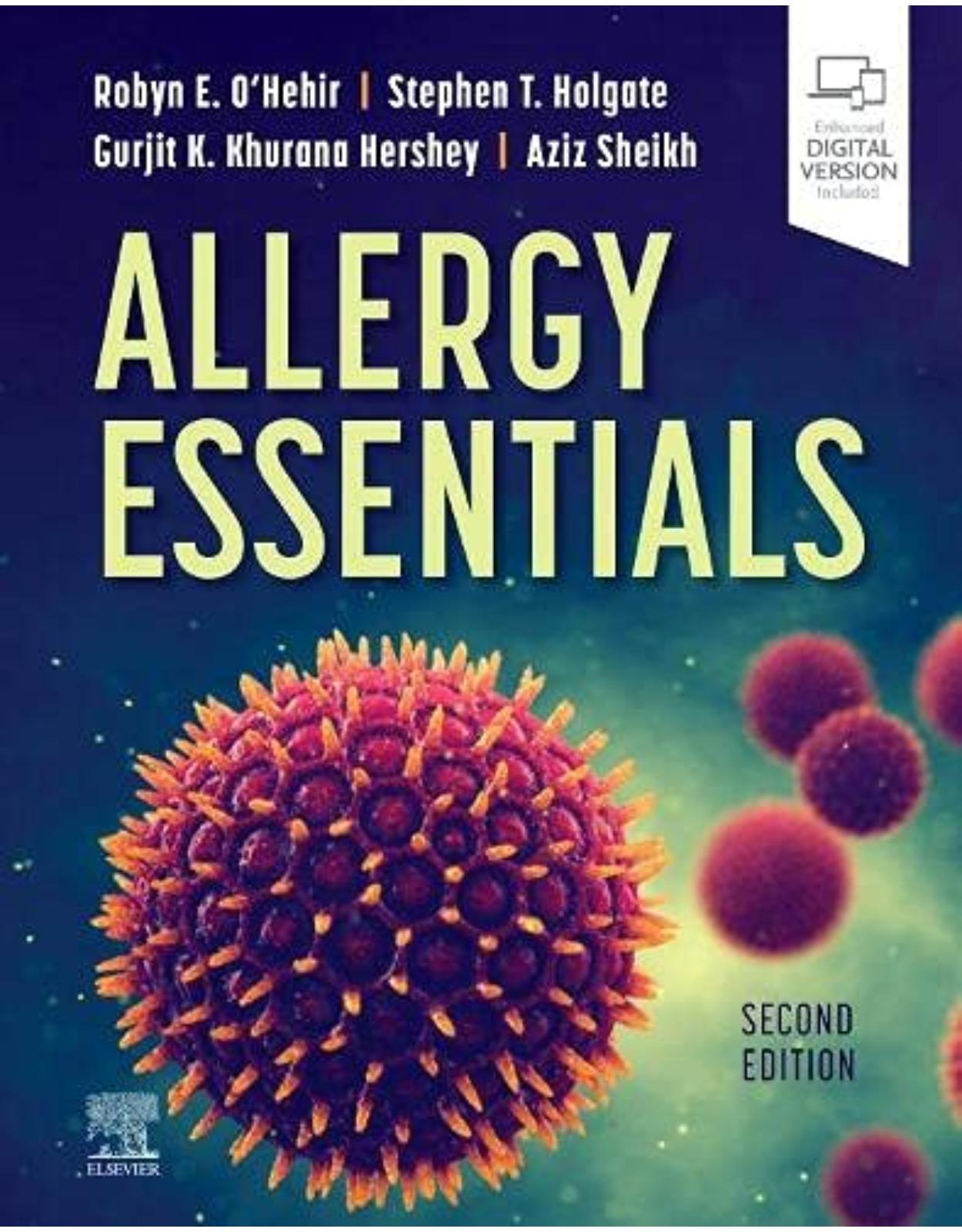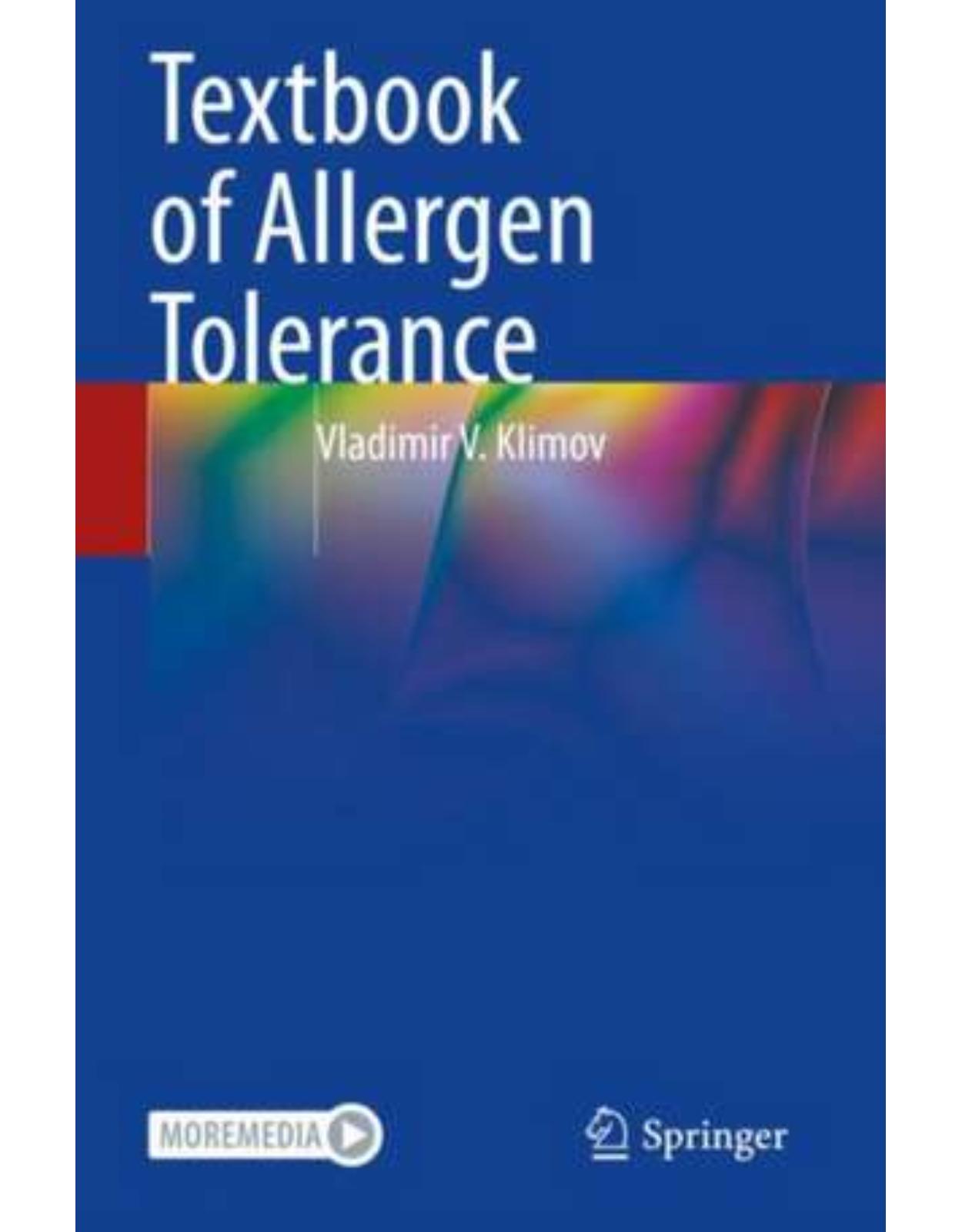
Lippincott Illustrated Reviews: Immunology
Livrare gratis la comenzi peste 500 RON. Pentru celelalte comenzi livrarea este 20 RON.
Disponibilitate: La comanda in aproximativ 4 saptamani
Autor: Dr. Thao Doan, Dr. Susan M. Viselli Ph.D., Dr. Fabio Lievano MD, Dr. Michelle Swanson-Mungerson PhD
Editura: LWW
Limba: Engleza
Nr. pagini: 400
Coperta: Paperback
Dimensiuni: 27.7 x 1.9 x 21.5 cm
An aparitie: 9 Mar. 2021
Description:
Lippincott® Illustrated Reviews: Immunology, 3rd Edition, offers an engaging, vividly illustrated presentation and all of the popular learning features of the Lippincott® Illustrated Review series to reinforce essential immunology concepts and connect basic science to real-life clinical situations. Like other titles in this series, this dynamic resource follows an intuitive outline organization and boasts a wealth of vibrant illustrations and study aids that clarify complex information and ensure retention. Whether used as a review text for a short immunology course or paired with Lippincott® Illustrated Reviews: Microbiology for a combined microbiology/immunology course, this revised and updated edition familiarizes readers with the latest practices in immunology and emphasizes clinical application to deliver unparalleled preparation for exams and clinical practice.
Table of Contents:
Video 1: B-Cell Activation
Video 2: Cytotoxic T-Cell Killing
Video 3: Isotype Switch
Video 4: T-Cell Activation
Video 5: VDJ Light and Heavy
Video 6: Type 1 Hypersensitivity
Video 7: Type III Hypersensitivity
Unit I: Sense of Being: The Concept of Self and Self/Nonself Recognition
Chapter 1: The Need for Self-Recognition
I. OVERVIEW
II. THE IMMUNOLOGIC CONCEPT OF SELF
A. Recognizing self
B. Recognizing the absence of self
C. Recognizing nonself
III. IMMUNOLOGIC MEMORY
IV. DEFENSE MECHANISMS
Study Questions
Chapter 2: Antigens and Receptors
I. OVERVIEW
II. ANTIGENS
A. Epitopes: The basic recognition unit
B. Immunogens
C. Haptens
D. Tolerogens
E. Immunogenicity
III. RECEPTORS
A. Preformed receptors
B. Somatically generated receptors
Study Questions
Unit II: The Innate Immune System
Chapter 3: Barriers to Infection
I. OVERVIEW
II. PHYSICAL BARRIERS
A. Skin
B. Mucous membranes
C. Respiratory tract
D. Urinary tract
III. CHEMICAL AND ENVIRONMENTAL BARRIERS
A. pH
B. Microcidal action of secreted molecules
IV. BIOLOGIC BARRIERS: COMMENSAL MICROBES
Study Questions
Chapter 4: Cells of the Innate Immune System
I. OVERVIEW
II. AGRANULAR LEUKOCYTES
A. Lymphoid lineage cells
B. Monocytic lineage cells
III. GRANULAR LEUKOCYTES
A. Neutrophils
B. Basophils and mast cells
C. Eosinophils
Study Questions
Chapter 5: Innate Immune Function
I. OVERVIEW
II. RECOGNITION
A. Pathogen-associated molecular patterns
B. Pattern recognition receptors
C. Markers of abnormal self
III. SOLUBLE DEFENSE MECHANISMS
A. Type I interferons
B. Microcidal molecules
C. Complement
D. Cytokines and chemokines
IV. CELLULAR DEFENSE MECHANISMS
A. Phagocytosis
B. Natural killer cell responses
V. INFLAMMATION
Study Questions
Unit III: The Adaptive Immune System
Chapter 6: Molecules of Adaptive Immunity
I. OVERVIEW
II. IMMUNOGLOBULINS
A. Basic structure
B. Isotypes
III. CLASSICAL PATHWAY OF COMPLEMENT ACTIVATION
A. Activation of C1
B. Production of C3 convertase
C. Production of C5 convertase
IV. MAJOR HISTOCOMPATIBILITY MOLECULES
A. MHC class I molecules
B. MHC class II molecules
V. T CELL RECEPTORS
A. Basic structure
B. Variable and constant regions
VI. MOLECULES OF CELLULAR INTERACTION
A. Cytokines
B. Chemokines
C. Adhesion molecules
D. Cluster of differentiation molecules
E. Signal transduction molecules
Study Questions
Chapter 7: Cells and Organs
I. OVERVIEW
II. LYMPHOCYTES
A. Thymus-derived cells
B. Bone marrow–derived cells
C. Natural killer cells
III. LYMPHOID TISSUES AND ORGANS
A. Primary organs
B. Secondary lymphoid tissues and organs
C. Lymphatic circulatory system
Study Questions
Chapter 8: Generation of Immune Diversity: Lymphocyte Antigen Receptors
I. OVERVIEW
II. PROPERTIES OF LYMPHOCYTE ANTIGEN RECEPTORS
III. DNA REARRANGEMENT
IV. T CELL RECEPTORS
A. Gene clusters encoding T cell receptors
B. Variable regions: Rearrangement of V, D, and J genes
C. Uniting variable and constant regions
D. Random combinations of light and heavy chains
V. B CELL RECEPTORS
A. Gene clusters encoding B cell receptors
B. Light chains
C. Heavy chains
D. Heavy and light chain combinations
E. Isotype switch: Mechanism
F. Isotype switch: Consequence
G. Somatic hypermutation
Study Questions
Chapter 9: Lymphocyte Development
I. OVERVIEW
II. T CELL LINEAGE
A. Thymus structure
B. αβ T cell development
C. γδ T cell development
D. NKT cell origin
III. B CELL LINEAGE
A. Bone marrow
B. B cell development
C. B-1 and B-2 B cells
Study Questions
Chapter 10: Lymphocyte Activation
I. OVERVIEW
II. ANTIGEN PRESENTATION
A. Presentation by MHC class II
B. Presentation by MHC class I
III. T CELL ACTIVATION
A. Immunologic synapse
B. T cell–signal transduction
C. CD41 T cell maturation
D. CD8+ T cell maturation
E. Control of T cell responses and memory T cell generation
IV. B CELL ACTIVATION
A. T-independent activation
B. T-dependent activation
C. Plasma cells and memory B cells
Study Questions
Chapter 11: Lymphocyte Effector Functions
I. OVERVIEW
II. HUMORAL IMMUNITY
A. Antigen–antibody reactions
B. Agglutination
C. Neutralization
D. Opsonization
E. Antibody-dependent cell-mediated cytotoxicity
F. Complement activation
G. Immediate hypersensitivity
III. CELL-MEDIATED IMMUNITY
A. Delayed (-type) hypersensitivity: Role of CD41 T cells
B. Cytotoxic T lymphocytes: Role of CD8+ T cells
IV. IMMUNOLOGIC MEMORY
Study Questions
Chapter 12: Regulation of Adaptive Responses
I. OVERVIEW
II. TOLERANCE
A. Mechanisms of immunologic nonresponsiveness
B. Regulatory T cells
C. The role of coinhibitors in immune regulation
III. REGULATION OF THE ADAPTIVE IMMUNE RESPONSE BY TH-CELL SUBSETS
IV. REGULATORY CYTOKINES
Study Questions
Unit IV: Clinical Aspects of Immunity
Chapter 13: The Well Patient: How Innate and Adaptive Immune Responses Maintain Health
I. OVERVIEW
II. CELLULAR RECIRCULATION AND HOMING
A. Cell adhesion molecules
B. Proinflammatory cytokines
C. Extravasation
III. RESPONSES TO INFECTIOUS AGENTS
A. Humoral responses
B. Cell-mediated responses
C. Effective responses to pathogens
D. Microbial evasion of immune responses
IV. INFLAMMATION
V. MUCOSAL IMMUNITY
A. Epithelial layer
B. Lamina propria
C. Mechanisms of mucosal immunity
VI. VACCINATION
A. Characteristics of vaccines
B. Types of vaccines
C. Adjuvants
Study Questions
Chapter 14: Hypersensitivity Reactions
I. OVERVIEW
II. TYPE I HYPERSENSITIVITY
A. Localized reactions
B. Systemic reactions
III. TYPE II HYPERSENSITIVITY
A. Interaction of antibody with cells
B. Interaction of antibody with the extracellular matrix
C. Antibody-mediated disruption of cellular function
IV. TYPE III HYPERSENSITIVITY
A. Localized reactions
B. Systemic reactions
V. TYPE IV HYPERSENSITIVITY
A. Contact dermatitis
B. Delayed (-type) hypersensitivity
C. T cell–mediated cytotoxicity
Study Questions
Chapter 15: Immune Deficiency
I. OVERVIEW
II. PRIMARY (CONGENITAL) IMMUNE DEFICIENCIES
A. Defects in stem cells
B. Defects in T cells
C. Defects in B cells
D. Defects in phagocytes and natural killer cells
E. Defects in the complement system
III. SECONDARY (ACQUIRED) IMMUNE DEFICIENCIES
A. Physiologic sequelae
B. Therapeutic treatment
C. Infection
D. Cancer
IV. TREATMENT OF IMMUNE DEFICIENCIES
A. Passive supplementation
B. Bone marrow transplantation
C. Genetic engineering
Study Questions
Chapter 16: Autoimmunity
I. OVERVIEW
II. SELF-TOLERANCE
A. Central tolerance
B. Peripheral tolerance
III. LOSS OF SELF-TOLERANCE
A. Molecular mimicry
B. Epitope spreading
C. Loss of suppression
D. Sequestered antigens
E. Neoantigens
IV. AUTOIMMUNE DISEASES
A. Humoral-associated autoimmune diseases
B. Cell-mediated autoimmune diseases
V. HLA ASSOCIATION WITH AUTOIMMUNE DISEASES
Study Questions
Chapter 17: Transplantation
I. OVERVIEW
II. GENETIC BASIS OF TRANSPLANTATION
A. Histocompatibility genes and antigens
B. Types of grafts
C. The laws of transplantation
III. TISSUE REJECTION
A. Types of rejection
B. Immune responses involved in rejection
C. Therapeutic intervention
IV. TISSUE-SPECIFIC CONSIDERATIONS
A. Transfusion
B. Bone marrow
C. Immune-privileged sites
V. TISSUE SOURCES
A. Human tissues and organs
B. Nonhuman (xeno-) tissues and organs
Study Questions
Chapter 18: Immune Pharmacotherapy
I. OVERVIEW
II. MEASURES THAT ENHANCE THE IMMUNE RESPONSE
A. Adjuvant therapy
B. Cytokine therapy
C. Antibody replacement therapy
III. MEASURES THAT DIMINISH THE IMMUNE RESPONSE
A. Anti-inflammatory agents
B. Immunosuppressive measures
IV. THERAPIES USED TO ALTER THE IMMUNE RESPONSE
A. Preemptive measures
B. Modification of ongoing disease
Study Questions
Chapter 19: Tumor Immunity
I. OVERVIEW
II. CANCER
A. Terminology and definitions
B. Malignant transformation
C. Tumors of the immune system
D. Oncogenes and cell growth
E. Tumor antigens
III. IMMUNE SURVEILLANCE
A. Innate
B. Adaptive
IV. IMMUNE EVASION
A. Evasion strategies by the tumor
B. Tumor immune evasion due to manipulated functions of immune cells
V. CANCER IMMUNOTHERAPY
A. Use of monoclonal antibodies to target tumor cells
B. Immunomodulatory molecules to increase an individual’s inherent antitumor immune response
C. Adoptive T cell transfer
D. Cancer vaccines
E. Alternative approaches to use the immune system to kill tumor cells
Study Questions
Chapter 20: Measurement of Immune Function
I. OVERVIEW
II. EPITOPE DETECTION BY ANTIBODIES
A. Particulate antigens
B. Soluble antigens
III. EPITOPE QUANTITATION BY ANTIBODIES
A. Radioimmunoassay
B. Enzyme-linked immunosorbent assay
C. Fluorescent immunosorbent assay
IV. EPITOPE DETECTION IN AND ON CELLS
A. Immunofluorescence
B. Flow cytometry
V. ASSESSMENT OF IMMUNE FUNCTION
A. Phagocyte function
B. Proliferation
C. Cytotoxic T-lymphocyte assay
VI. ASSESSMENT OF HYPERSENSITIVITY
A. Allergy skin testing (type I hypersensitivity)
B. Testing for types II and III hypersensitivity
C. Contact dermatitis and delayed (-type) hypersensitivity (type IV)
Study Questions
Review Questions
Glossary
Index
| An aparitie | 9 Mar. 2021 |
| Autor | Dr. Thao Doan, Dr. Susan M. Viselli Ph.D., Dr. Fabio Lievano MD, Dr. Michelle Swanson-Mungerson PhD |
| Dimensiuni | 27.7 x 1.9 x 21.5 cm |
| Editura | LWW |
| Format | Paperback |
| ISBN | 9781975172602 |
| Limba | Engleza |
| Nr pag | 400 |










Clientii ebookshop.ro nu au adaugat inca opinii pentru acest produs. Fii primul care adauga o parere, folosind formularul de mai jos.